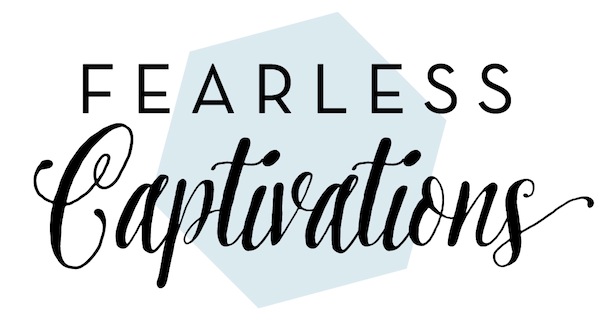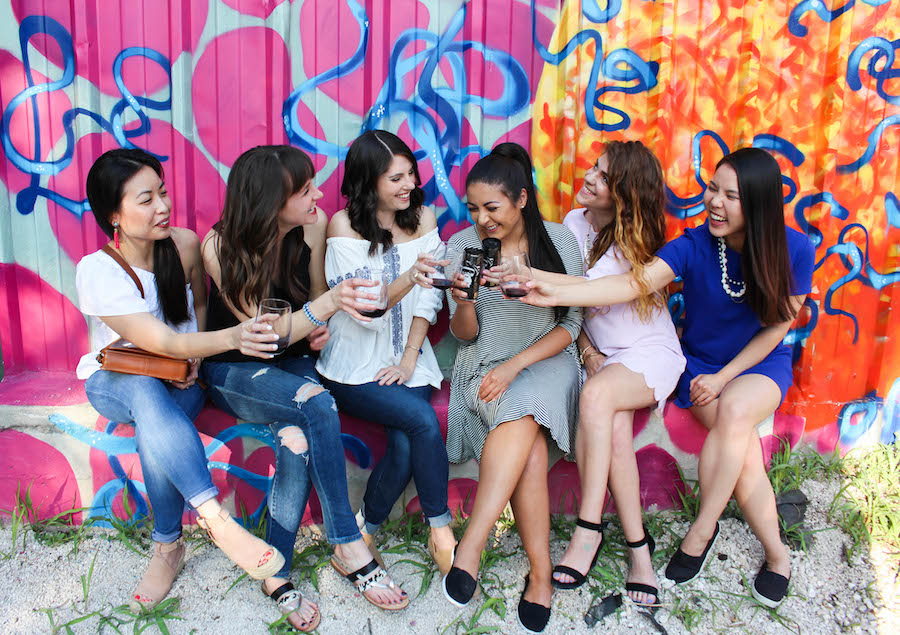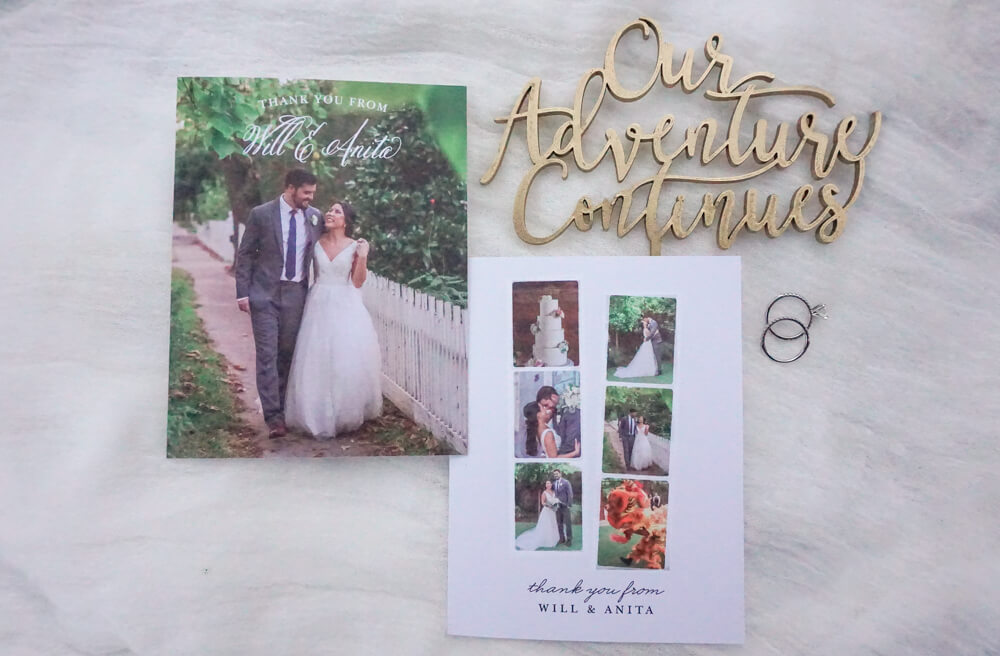Chinese wedding traditions, like the tea ceremony, were a very special part of our wedding day. Read all about them here.
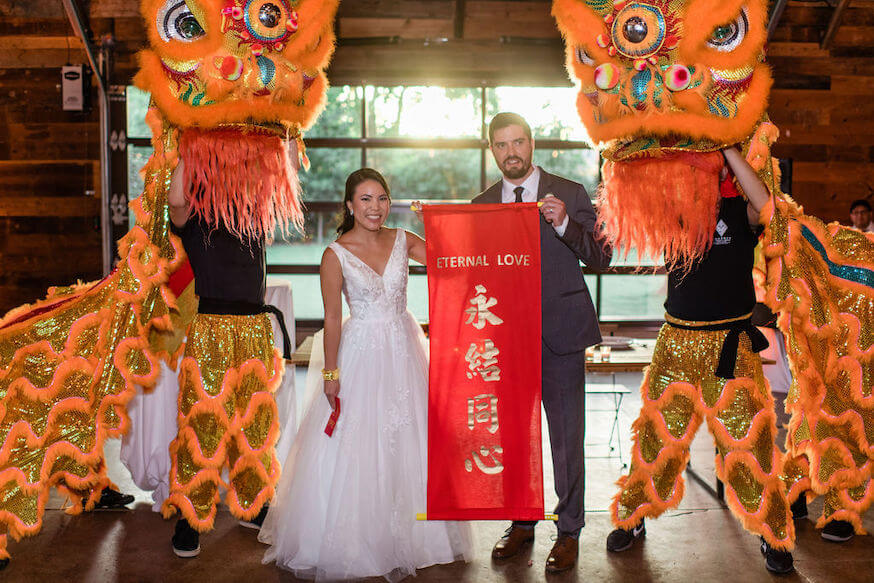
When I first started wedding planning, I thought about incorporating Chinese traditions into our wedding day but it wasn’t a must-have. My parents didn’t seem to care either. I looked into a few wedding invitation options and traditional dress but they both either didn’t fit with what we wanted or it seemed like an added cost for something I didn’t feel strongly about.
Fast forward to about three months before the wedding and my parents begin to have a lot of thoughts and preferences. Luckily, most of them could be fit into our schedule and they helped arrange all the details for these elements.
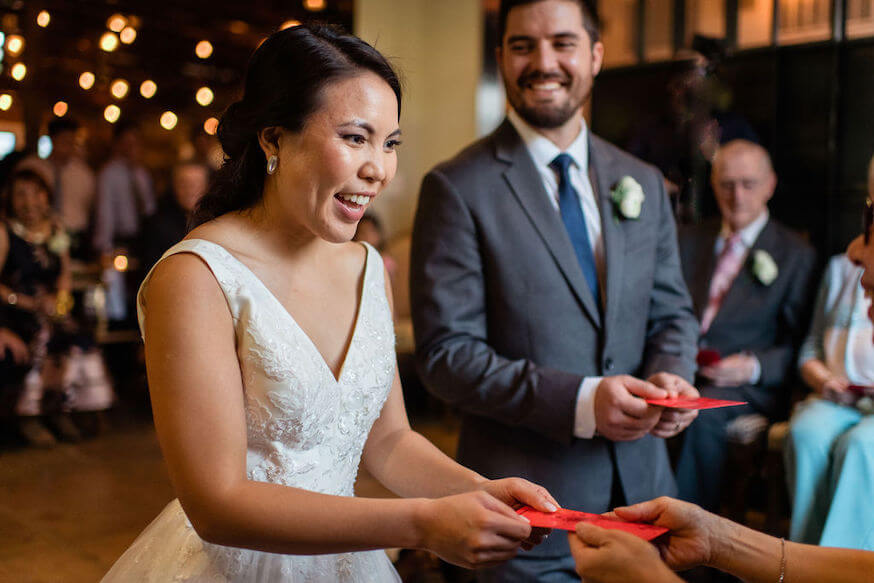
Looking back now, I’m glad I got to have these Chinese traditions at our wedding to be able to honor my side of the family and share them with our guests! If you’re thinking about incorporating Chinese traditions into your wedding, here are some of the typical things to include.

Double Happiness
The double happiness is a typical symbol that is displayed on everything from wedding invitations to party favors. Traditionally, it’s accompanied by bright red color, the lucky color. If you’re wanting to subtly include Chinese traditions, adding the symbol to your invitation, as your cake topper, and wedding programs are an easy way to do it. Our double happiness was featured on the teapot for our tea ceremony and on red envelopes.
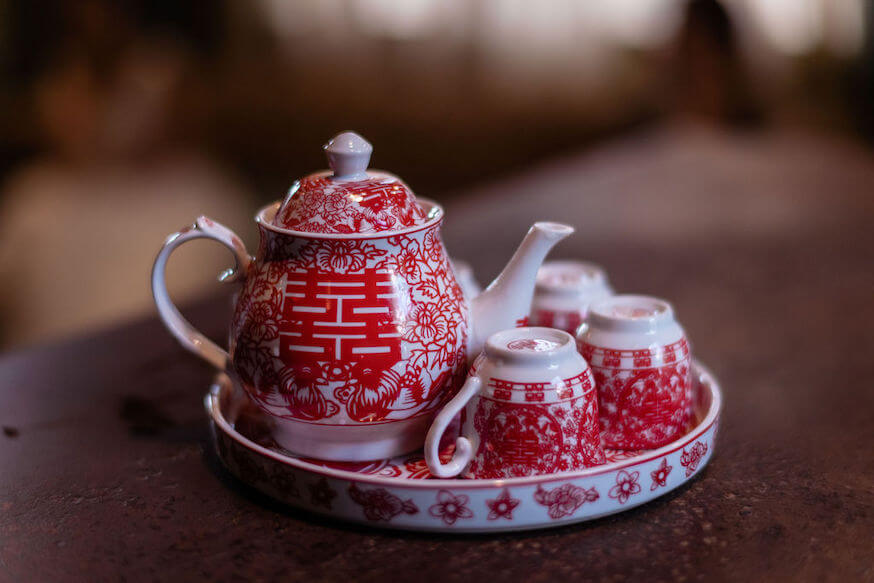
10-Course Meal
A traditional Chinese wedding banquet includes a 10-course meal with the roasted pig, lobster, scallops, chicken, duck, noodles, abalone, sea cucumber, and fish. Each ingredient has a different meaning and symbolizes things like abundance, longevity, prosperity, and fertility. This family-style meal is why many choose to have their reception at a Chinese banquet hall. Will and I honored our Texas roots with a menu of brisket and potatoes at our reception, but we did enjoy a multi-course Chinese dinner for our rehearsal dinner! It included our favorite dishes like snow pea leaves, roasted duck, whole steamed fish, and lobster noodles.
Roasted Whole Pig
Traditionally, a roasted whole pig was given to the bride’s family as part of the dowry, but now, it’s a dish that is typically a part of the menu. The pig is usually the first course of the 10-courses. My parents wanted the pig prepared in a certain way and since we were a little late in deciding to include it, ours was simply decoration until my family took it home and enjoyed it.
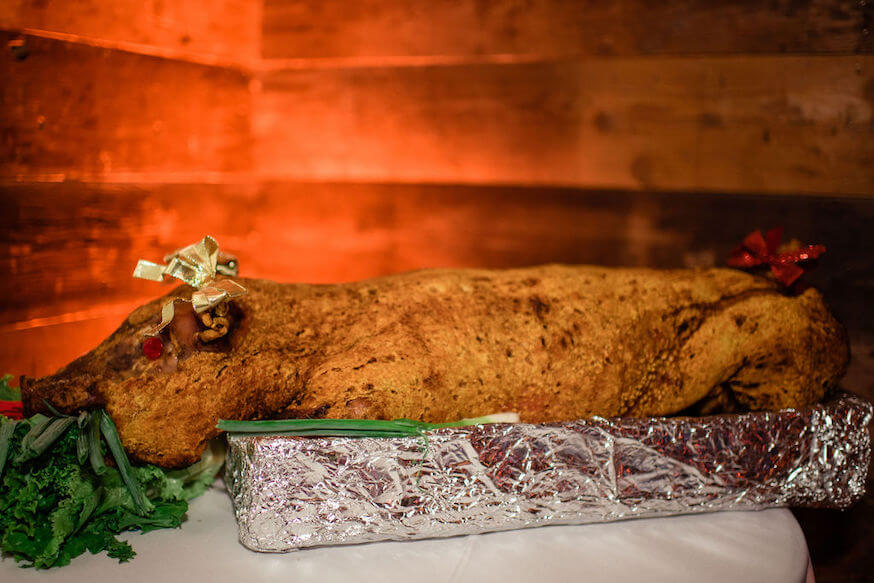
Red Envelopes
Gifting cash is typical in Chinese culture. Couples usually don’t have a registry because it might seem inappropriate to ask for gifts. Red envelopes (“lai see” in Cantonese) are also used for Chinese New Year, so make sure your Chinese characters don’t say Happy New Year! If you’re not sure, a plain red envelope will work. Don’t put an amount with the number four in it because it’s considered bad luck; the Chinese word for four sounds like the word for death. The number eight is the luckiest number and the amount should be an even number. Lastly, be sure to write a note with your name on the envelope so the bride and groom know who it’s from.
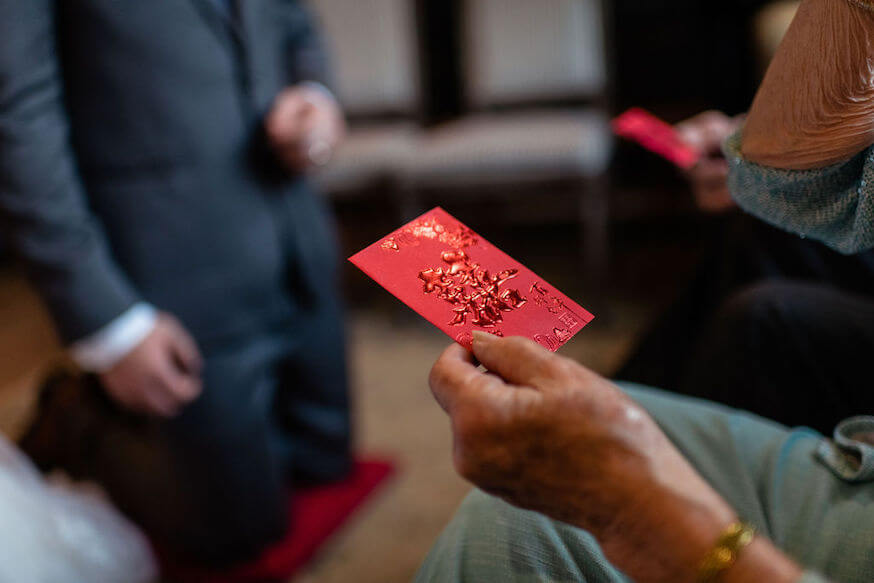
Tea Ceremony
The tea ceremony is a tradition where the bride and groom kneel and serve tea to their elder family members (parents, grandparents, aunts, and uncles) as a gesture of respect and gratitude. We offered a cup of tea with both hands to the elder in front of us and said “yum cha,” literally meaning “drink tea” in Cantonese. After the elder takes a sip, they gift the couple with a red envelope or jewelry while offering best wishes.
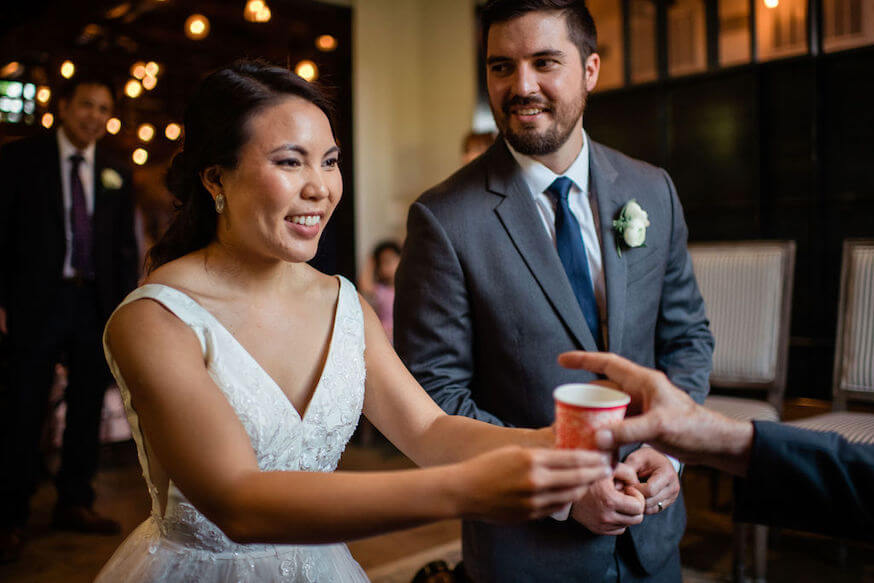
We did this after our ceremony and photos and before our reception. It was semi-private because most of our guests were outside for cocktail hour, but it was open for anyone to observe. While Will and I had no clue what we were supposed to do, our family friend took the lead in preparing the teapot and cups (they must be red) and telling us what to do.
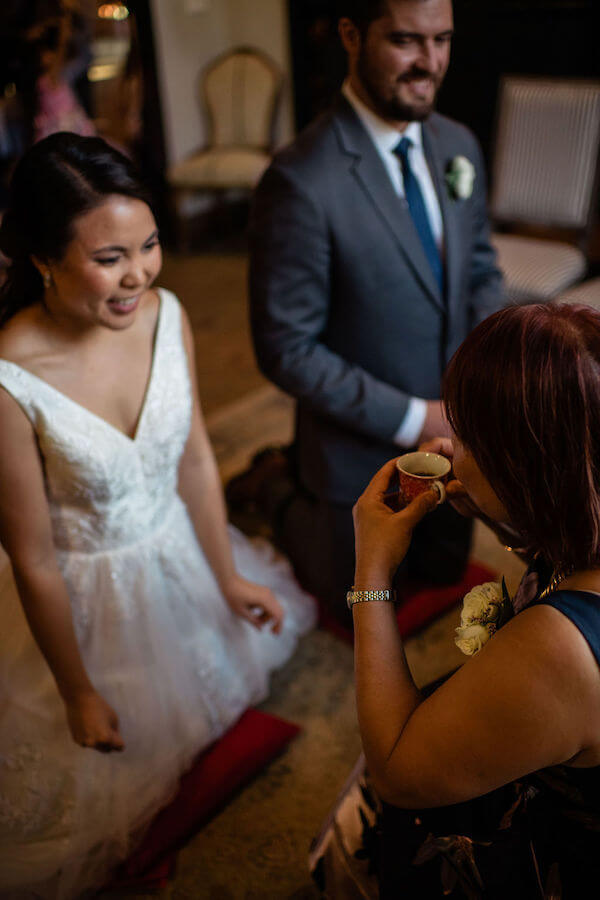
Lion Dance
The lion dance is a blessing that brings good luck and fortune for a long and happy marriage. The dance includes live, loud drumming and cymbals, thought to help drive away evil marriage-destroying spirits. We didn’t tell many guests this was happening, so we were excited to have them experience it! The lion dance kicked off our reception as we and our wedding party walked in and performed for about 10-15 minutes.
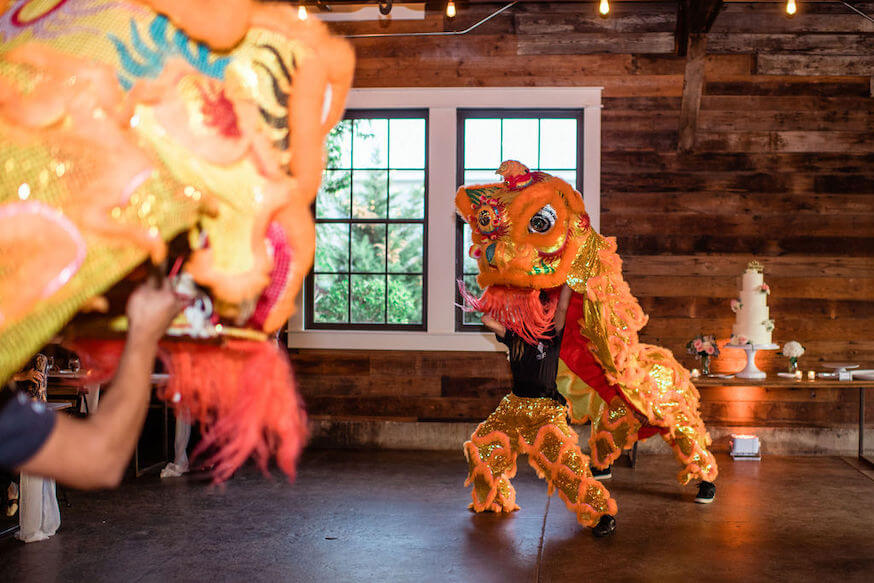
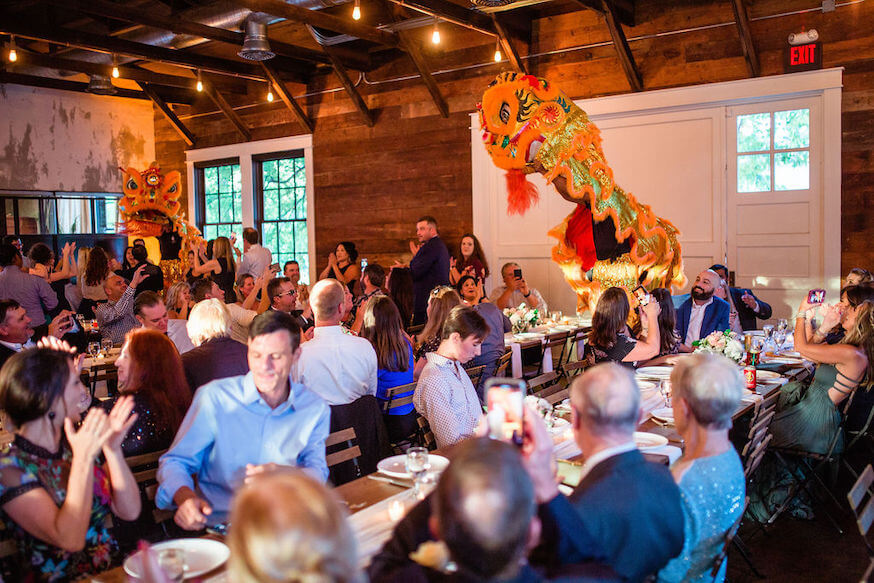
We are lucky to have a family friend from Dallas that has taught and organized lion dances for years. In fact, my dad was a part of their team about 20 years ago. It was the sweetest gesture that he practiced with them for a few weeks to get his groove back to perform at our wedding, and he was awesome!

Conclusion
While I wasn’t adamant about including traditions from my culture in our wedding day, I’m so glad we did! It was special to involve my family in our day.
In case you want some more ideas, here are some additional Chinese wedding traditions:
- Picking a lucky date based on the Chinese calendar
- Hair combing ceremony for the bride
- Door games/tests for the groom given by the bride’s family to show he’s worthy or nowadays, it’s for fun
- Brides having two to three outfit changes throughout the day. This usually includes a qipao, the traditional red dress.
Have you ever been to a Chinese or Asian wedding? Any stories to share?
Photos by April Mae Creative
P.S. See more posts about our wedding here!
Let’s connect on social! You can find me on Instagram, Facebook, Twitter, Pinterest, and Bloglovin’. You can also subscribe to the exclusive email list.
